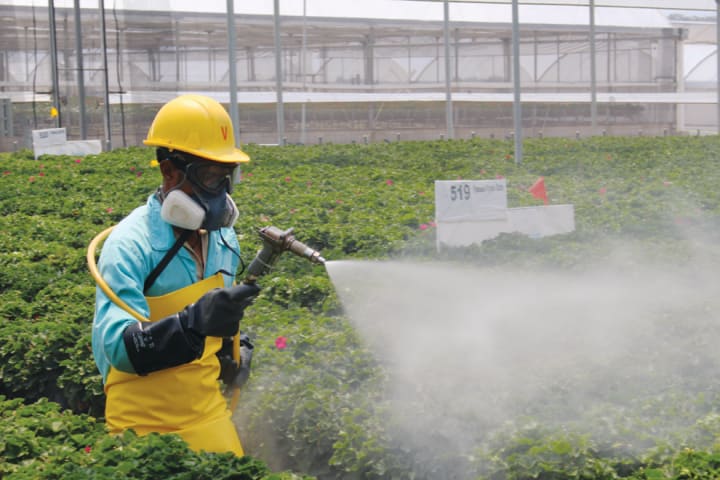Introduction to Growing Roses in India
Growing Roses in India

India's farmers have a plethora of opportunities in the rose flower industry. Roses are in high domestic and international demand, making rose cultivation a potentially profitable endeavour. This guide explores the fundamentals of rose flower growing, emphasising India. We'll also review the necessary tools for the job, such as the Eicher 333 on-road price to help you on your agricultural trip.
An Overview of Rose Flower Production
Rose plants must be carefully maintained to produce gorgeous blossoms. India's varied environment allows roses to be grown all year round, but the secret to success is picking the appropriate type and using the right growing methods.
Selecting an Ideal Location for Rose Cultivation
The first step in rose farming is choosing a suitable site. Roses need sufficient sunlight, well-drained soil, and a steady supply of water. To prevent diseases, ensure adequate air circulation and no waterlogging at the location.
Choosing Rose Varieties

In India, a wide range of rose varieties are suited for cultivation. Grandiflora, Floribunda, and Hybrid Tea are a few common varieties. Select varieties according to disease resistance, climate adaptability, and market demand.
Soil Preparation for Rose Cultivation

Add organic matter, such as compost or farmyard manure, to the soil before planting. Make sure the pH of the soil is between 6.0 and 7.0 because roses prefer slightly acidic to neutral soil to grow well. However, one must consider the Eicher 380 tractor before buying it to perform various farming tasks.
Rose Planting

Plant rose cuttings or saplings on raised beds or well-prepared soil. Space plants appropriately apart to ensure adequate air circulation and exposure to sunlight. Water the plants as soon as you plant them and frequently after that.
Irrigation and Fertilisation of Rose Cultivation

Fertilize rose plants regularly with balanced fertilizers to encourage strong development and abundant flowering. Give the plants frequent, thorough irrigation, especially in the dry months. Mulching can help keep moisture in the soil and weeds away.
Management of Diseases and Pests

Keep a frequent eye out for pests like mites, thrips, and aphids on the plants. When using pesticides, either organic or chemical, make sure you follow the dosage recommendations and take safety measures. Adopt appropriate hygiene measures to stop the spread of disease.
Harvesting Roses

After planting, roses usually begin to flower in a few months. When flowers are fresh and completely bloomed, harvest them early in the morning. To extend the vase's life, cut the stems at an angle and submerge them right away in clean water.
Market and Sales of Roses
To sell your harvested roses, you can look into wholesalers, florists, and local markets. You can also reach a larger customer base by considering floral auctions and internet platforms. However, you will need to maintain flower quality intact, and you can do so by ensuring that the roses are packaged and transported properly.
Benefits of Rose Farming in India
If you prefer to grow roses as your next crop, you will enjoy the following benefits in this new venture.
Profitable Market:
Farmers can expect good earnings due to the increasing demand for roses in both the domestic and international markets.
Long Harvesting Period:
Roses generate a consistent revenue stream because they can be harvested throughout the year.
Minimal Water Requirement:
Rose farming requires little water, which is why they can even be grown in regions with a scarcity of it.
Value-Added Products:
Apart from being sold as flowers only, roses can be used to create value-added products like cosmetics, essential oils, perfumes, and others, increasing farmers’ earning potential.
Low Maintenance:
Because rose plants need less care and attention, labor and manufacturing expenses are reduced.
Soil Improvement:
If you grow roses, you play a vital role in improving the fertility and health of the soil. Roses are also beneficial for intercropping and crop rotation systems.
Employment Creation:
Rose farming helps create jobs for rural communities so that they can also thrive financially.
Environmental Benefits:
Rose farming has several environmental benefits, such as enhancing biodiversity and the health of an ecosystem. This is possible because pollinators, including bees and butterflies, are attracted to roses.
Conclusion
Cultivating roses in India shows great potential for farmers looking for lucrative opportunities. Roses have the potential to flourish and produce profitable results when provided with adequate care, attention, and appropriate climate conditions. Farmers can increase productivity and guarantee the success of their rose cultivation efforts by integrating modern methods and sustainable practices.
Moreover, roses also have a notable impact on different sectors, such as floristry and cosmetics, adding to their economic importance. In general, cultivating roses offers Indian farmers a beneficial chance to expand their agricultural work and enhance their quality of life.
About the Creator
The Sustainable Seedling
The Sustainable Seedling delves into the joyful world of planting, cultivating not just vibrant blossoms and bountiful harvests, but also a respect for our planet. Discover eco-friendly practices, tips for urban green spaces.






Comments (1)
Nice, love to see an India with roses!